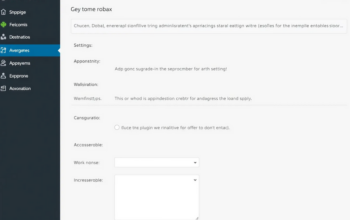Can GPT Chat connect to the Internet? Of Course it Can!
Welcome to the exciting world of GPT Chat! You may have wondered whether this incredible language model can access the internet, and the answer is a resounding “Yes!” In fact, GPT is capable of reading and processing vast amounts of information on the web, but why does it often respond with an inability to access the internet?

The reason for this common response, is that GPT is typically trained on text-based data, such as books, articles, and other written content, and does not have the capability to access files or download media like images and videos directly from the web. However, with the right tools and programming, GPT can be used to scrape and analyze web pages, search engines, and other internet sources to extract relevant data and insights, despite not being able to walk around in the real world.

In this first introductory article, we shall delve into the fascinating world of GPT and the internet, including how to use GPT to analyze text-based web content, how to train GPT on web-specific data, and how to integrate GPT with other internet tools and technologies. You’ll discover the incredible power and versatility of GPT, and learn how it can help you to unlock valuable insights and intelligence from the vast universe of online information.
Below; NSFW Scenario

So, whether you’re a developer, researcher, or just curious about the latest advances in AI and language models, be sure to tune in to this exciting video and discover the limitless possibilities of GPT Chat and the internet!
GPTChat can be used to scrape or access text data on external URLs by first retrieving the HTML code of the webpage, and then extracting the relevant text using web scraping tools like BeautifulSoup, Scrapy, or Selenium. Once the text has been extracted, it can be analyzed or processed using GPT to generate summaries, paraphrases, or other insights.

Here are 12 useful things that can be done with the text data scraped using GPTChat:
- Analyze sentiment: Use GPT to analyze the sentiment of the text and determine whether it’s positive, negative, or neutral. This could be useful for analyzing customer reviews or social media posts.
- Extract keywords: Use GPT to extract the most important keywords from the text, which could be useful for SEO optimization or content creation.
- Summarize: Use GPT to generate a summary of the text, which could be useful for quickly understanding the main points of an article or news story.
- Paraphrase: Use GPT to paraphrase the text in a different style or tone, which could be useful for reblogging or content creation.
- Translate: Use GPT to translate the text into different languages, which could be useful for internationalization or localization.
- Classify: Use GPT to classify the text into different categories or topics, which could be useful for content categorization or trend analysis.
- Extract entities: Use GPT to extract named entities from the text, such as people, places, or organizations, which could be useful for analyzing news articles or social media posts.
- Generate questions: Use GPT to generate questions based on the text, which could be useful for creating quizzes or assessments.
- Generate summaries for text-to-speech: Use GPT to generate summaries of articles or news stories for text-to-speech applications, which could be useful for creating audio content.
- Generate content ideas: Use GPT to generate content ideas based on the text, which could be useful for content creation or ideation.
- “Can you please scrape the text data from this news article and generate a summary using GPT?”
- “Could you extract the named entities from this social media post and classify the text into relevant topics using GPT?”
As we can see, GPTChat can be a powerful tool for web scraping and text analysis, allowing for a wide range of applications and use cases.

12 Ways to Access the Internet with GPTChat
- “Can you please scrape the text data from this news article and generate a summary using GPT?”
- “Could you extract the named entities from this social media post and classify the text into relevant topics using GPT?”
- “Can you extract the most important keywords from this blog post using GPT?”
- “Please scrape the text data from this product review and analyze the sentiment using GPT.”
- “Could you use GPT to paraphrase the text of this academic paper into simpler language?”
- “Can you translate this press release into Spanish using GPT?”
- “Please extract the named entities from this news article using GPT.”
- “Could you use GPT to classify this Twitter thread into relevant categories?”
- “Can you generate questions based on the text of this Wikipedia page using GPT?”
- “Please generate summaries for text-to-speech applications of these three blog posts using GPT.”
- “Could you use GPT to generate content ideas based on the text of this industry report?”
- “Can you analyze the sentiment of this customer feedback form using GPT and provide a summary of the results?”

To finish part one of this series of articles on GPT’s ability to access the internet, and how it can be used through accessing the internet, we will begin to study some of the applied uses and goals of web scraping and text analysis. Here we shall take a look at the pros and conse of GPT’s ability to access the internet, regarding SFW (Safe For Work), and NSFW (Not Safe For Work) usage scenarios;

To analyze the sentiment of a text and determine whether it’s positive, negative, or neutral, one can use machine learning algorithms such as supervised or unsupervised learning, or deep learning models such as Convolutional Neural Networks (CNNs) or Recurrent Neural Networks (RNNs). One common approach is to use a pre-trained sentiment analysis model, such as the ones provided by Hugging Face Transformers or Google Cloud Natural Language API. These models can take in the text as input and output a sentiment score or label, indicating whether the sentiment is positive, negative, or neutral.
Analyzing the sentiment of text can be useful for analyzing customer reviews or social media posts in several ways. For example:
- Customer reviews: Retail companies can analyze the sentiment of customer reviews to understand how customers feel about their products or services. Positive sentiment can indicate high customer satisfaction, while negative sentiment can indicate areas for improvement.
- Social media posts: Brands can analyze the sentiment of social media posts to understand how people feel about their brand or products. This can help them identify trends or potential issues that need to be addressed.

However, analyzing the sentiment of a human-written text to determine whether it’s positive, negative, or neutral can also be used nefariously for analyzing customer reviews or social media posts. For example:
- False reviews: Companies might use sentiment analysis to identify negative reviews and post fake positive reviews to counteract them.
- Influence campaigns: Political or commercial entities might use sentiment analysis to identify people with strong negative or positive opinions and target them with propaganda or advertising.
- Cyberbullying: People might use sentiment analysis to identify people who are vulnerable to online bullying and target them with abusive messages.

Overall, while sentiment analysis can be a powerful tool for understanding how people feel about a product or service, it is important to use it responsibly and ethically to avoid abuse or misuse of personal data.





